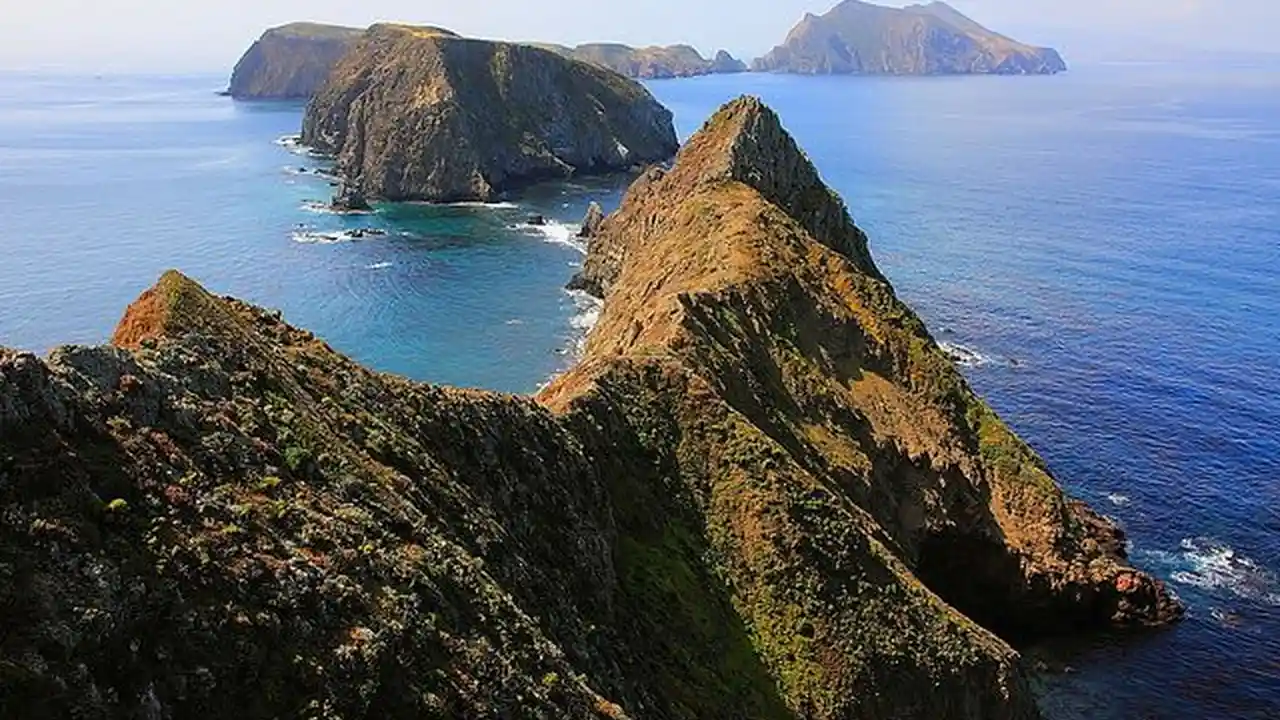Golden Gate Park_ Urban Oasis in San Francisco

Understanding California's Diverse Ecosystems A Comprehensive Overview
California, a land of sunshine and sprawling landscapes, boasts an extraordinary array of ecosystems. From the towering redwood forests of the north to the arid deserts of the south, the Golden State is a biodiversity hotspot, teeming with unique flora and fauna. Understanding these ecosystems is crucial for conservation efforts and appreciating the natural beauty that surrounds us.
Redwood Forests Majestic Giants and Their Ecological Significance
The redwood forests, home to the tallest trees on Earth, are a sight to behold. These ancient giants, some over 2,000 years old, create a unique microclimate that supports a diverse understory of ferns, mosses, and other plant life. The redwood ecosystem is also home to a variety of animals, including the marbled murrelet, a seabird that nests in the old-growth trees, and the Roosevelt elk, which grazes on the forest floor. The health of the redwood forests is vital for carbon sequestration and maintaining the region's water supply.
California's Chaparral Ecosystem Resilient and Fire Adapted
The chaparral ecosystem, characterized by dense thickets of shrubs and small trees, is a dominant feature of California's landscape. This ecosystem is highly adapted to fire, with many plants having evolved strategies to survive or even thrive after wildfires. The chaparral provides habitat for a variety of animals, including the California quail, the wrentit, and the California scrub jay. Conservation efforts focus on managing fire regimes and protecting this valuable ecosystem from development.
Deserts of California Harsh Environments and Unique Adaptations
California's deserts, including the Mojave and the Sonoran, are harsh environments characterized by extreme temperatures and limited rainfall. Despite these challenges, a surprising variety of plants and animals have adapted to survive in these arid landscapes. Cacti, succulents, and other drought-resistant plants thrive in the desert, while animals such as the desert tortoise, the kangaroo rat, and the sidewinder have evolved specialized adaptations to conserve water and tolerate extreme heat. Understanding the delicate balance of the desert ecosystem is crucial for protecting its unique biodiversity.
Coastal Ecosystems Where Land Meets Sea
California's coastline is a dynamic and diverse environment, encompassing rocky shores, sandy beaches, estuaries, and kelp forests. These coastal ecosystems support a wide range of marine life, from seabirds and seals to sea otters and whales. The health of these ecosystems is threatened by pollution, climate change, and overfishing. Conservation efforts focus on protecting marine habitats, reducing pollution, and managing fisheries sustainably.
The Sierra Nevada Mountains Alpine Wonders and Watershed Importance
The Sierra Nevada mountains, a majestic mountain range stretching along the eastern edge of California, are a vital source of water for the state. The high-elevation alpine ecosystems of the Sierra Nevada are characterized by snow-capped peaks, glacial lakes, and meadows. These ecosystems provide habitat for a variety of animals, including the Sierra Nevada bighorn sheep, the American pika, and the yellow-legged frog. Protecting the Sierra Nevada's watersheds is crucial for ensuring a reliable water supply for California's growing population.
Golden Gate Park A Man Made Ecosystem in the Heart of San Francisco
Golden Gate Park, a sprawling urban oasis in the heart of San Francisco, is a testament to the power of human ingenuity and the importance of green spaces in urban environments. This man-made ecosystem provides a refuge for both wildlife and people, offering a variety of recreational opportunities and enhancing the city's quality of life.
Conserving California's Ecosystems Challenges and Opportunities
Conserving California's diverse ecosystems is a complex challenge, requiring a collaborative effort from government agencies, conservation organizations, and private landowners. Climate change, habitat loss, and invasive species are among the major threats facing California's ecosystems. However, there are also many opportunities for conservation, including restoring degraded habitats, protecting endangered species, and promoting sustainable land management practices.
Sustainable Tourism and Responsible Recreation in California's Natural Areas
Sustainable tourism and responsible recreation are essential for protecting California's natural areas. By choosing eco-friendly accommodations, supporting local businesses, and minimizing our impact on the environment, we can help ensure that future generations can enjoy the beauty and wonder of California's ecosystems.
Citizen Science and Community Involvement in Ecosystem Monitoring
Citizen science and community involvement play a vital role in monitoring and protecting California's ecosystems. By participating in volunteer projects, reporting observations, and educating others about the importance of conservation, we can all contribute to the health and well-being of our natural environment.
The Impact of Climate Change on California's Ecosystems A Growing Concern
Climate change is having a profound impact on California's ecosystems, with rising temperatures, altered precipitation patterns, and increased frequency of extreme weather events. These changes are threatening the survival of many plant and animal species, as well as the health and resilience of entire ecosystems. Addressing climate change is crucial for protecting California's natural heritage.
California Native Plant Gardening Creating Habitat in Your Backyard
California native plant gardening is a great way to create habitat for wildlife and support the health of local ecosystems. By planting native species, you can provide food and shelter for birds, butterflies, and other animals, while also reducing your water consumption and reliance on pesticides. There are many resources available to help you choose the right plants for your region and create a beautiful and sustainable garden.
The Role of Technology in Ecosystem Management and Conservation
Technology is playing an increasingly important role in ecosystem management and conservation. From remote sensing and GPS tracking to data analysis and modeling, technology can help us better understand and protect California's ecosystems. Drones, for example, are used to monitor wildlife populations, assess habitat conditions, and detect illegal activities. Geographic Information Systems (GIS) are used to map and analyze environmental data, while artificial intelligence (AI) is being used to predict and prevent wildfires.
Protecting California's Water Resources A Critical Ecosystem Need
Protecting California's water resources is essential for the health and well-being of its ecosystems. Water is a scarce resource in California, and its availability is increasingly threatened by climate change and population growth. Conserving water, reducing pollution, and managing water resources sustainably are crucial for ensuring that California's ecosystems have the water they need to thrive.
Eco-Friendly Products and Their Role in Ecosystem Preservation
Choosing eco-friendly products can significantly contribute to ecosystem preservation. Many everyday products, from cleaning supplies to clothing, are made with materials and processes that harm the environment. By opting for products that are made with sustainable materials, are biodegradable, and are produced using environmentally friendly practices, we can reduce our impact on California's ecosystems. Here's a deeper dive:
Eco-Friendly Cleaning Products: A Detailed Comparison and Recommendation
Traditional cleaning products often contain harsh chemicals that can pollute waterways and harm aquatic life. Eco-friendly cleaning products, on the other hand, are made with plant-based ingredients and are biodegradable. They are also often packaged in recycled or recyclable materials. Let's compare some popular options:
Product Comparison: Eco-Friendly Cleaning Solutions
Here's a detailed comparison table of some popular eco-friendly cleaning products:
| Product Name | Key Ingredients | Price (approximate) | Pros | Cons | Use Cases |
|---|---|---|---|---|---|
| Seventh Generation All-Purpose Cleaner | Plant-derived cleaning agents (coconut, palm kernel), essential oils | $4.00 | Effective cleaning, pleasant scent, widely available | May not be as effective on tough stains | Everyday cleaning of countertops, floors, and other surfaces |
| Mrs. Meyer's Clean Day Multi-Surface Everyday Cleaner | Plant-derived cleaning agents, essential oils | $4.50 | Variety of scents, effective cleaning, cruelty-free | Slightly more expensive than some other options | Cleaning kitchens, bathrooms, and other living spaces |
| Better Life All-Purpose Cleaner | Plant-derived cleaning agents (soap bark, corn, coconut), essential oils | $5.00 | Tough on grime, gentle on surfaces, safe for kids and pets | Less widely available than some other brands | Cleaning tough messes, especially in kitchens and bathrooms |
| Branch Basics Concentrate | Decyl glucoside (coconut-derived), chamomile extract, coco-glucoside | $24.00 (Concentrate) | Versatile concentrate for multiple cleaning needs, non-toxic, refillable bottles | Initial investment is higher, requires dilution | All-purpose cleaner, laundry detergent, hand soap, and more |
Recommended Product: Branch Basics Concentrate
For a truly eco-friendly and versatile cleaning solution, I recommend Branch Basics Concentrate. While the initial investment is higher, the concentrate can be diluted to create a variety of cleaning products, including all-purpose cleaner, laundry detergent, hand soap, and more. Branch Basics uses non-toxic, plant-based ingredients and offers refillable bottles, reducing plastic waste. This is a great option for those looking to minimize their environmental impact and simplify their cleaning routine.
Pricing and Availability of Eco-Friendly Cleaning Products
Eco-friendly cleaning products are becoming increasingly available in supermarkets, health food stores, and online retailers. Prices vary depending on the brand and product type, but generally, they are slightly more expensive than traditional cleaning products. However, the benefits to the environment and your health make them a worthwhile investment.
Sustainable Clothing: Materials, Brands, and Ethical Considerations
The fashion industry is a major contributor to environmental pollution, with textile production consuming vast amounts of water and energy and generating significant waste. Sustainable clothing, on the other hand, is made with eco-friendly materials, such as organic cotton, recycled polyester, and hemp, and is produced using ethical labor practices. Let's explore some sustainable clothing brands and their offerings:
Sustainable Clothing Brands: A Comparison
Here's a comparison table of some popular sustainable clothing brands:
| Brand Name | Materials Used | Price Range | Style | Ethical Practices | Product Examples |
|---|---|---|---|---|---|
| Patagonia | Organic cotton, recycled polyester, hemp | $$ - $$$ | Outdoor, casual | Fair labor practices, environmental activism, repair programs | Fleece jackets, hiking pants, t-shirts |
| Eileen Fisher | Organic cotton, recycled cashmere, linen | $$$ - $$$$ | Classic, minimalist | Fair labor practices, sustainable sourcing, take-back program | Sweaters, dresses, pants |
| People Tree | Organic cotton, Fair Trade certified | $ - $$ | Bohemian, ethical | Fair Trade certified, supports artisan communities | Dresses, tops, skirts |
| Reformation | Sustainable fabrics, recycled materials | $$ - $$$ | Trendy, feminine | Sustainable practices, transparent supply chain | Dresses, tops, jeans |
Recommended Brand: Patagonia
Patagonia is a well-known and respected brand that is committed to sustainability and ethical practices. They use recycled materials, organic cotton, and hemp in their clothing and have a strong focus on fair labor practices and environmental activism. Patagonia also offers repair programs to extend the life of their products, reducing waste. While their clothing can be more expensive than some other brands, the quality and durability make it a worthwhile investment.
Pricing and Availability of Sustainable Clothing
Sustainable clothing can be found online and in select retail stores. Prices vary depending on the brand and materials used, but generally, it is more expensive than conventional clothing. However, the investment in sustainable clothing is an investment in the environment and ethical labor practices.
Eco-Friendly Home Goods: Furniture, Decor, and More
Creating an eco-friendly home involves choosing furniture, decor, and other home goods that are made with sustainable materials and produced using environmentally friendly practices. This can include furniture made from reclaimed wood, organic cotton bedding, and energy-efficient appliances.
Eco-Friendly Furniture Options
When choosing furniture, look for options made from sustainable materials such as reclaimed wood, bamboo, or recycled plastic. Avoid furniture made with formaldehyde-containing glues or treated with harmful chemicals. Some brands to consider include:
- West Elm: Offers a variety of sustainably sourced furniture options.
- VivaTerra: Specializes in handcrafted furniture made from sustainable materials.
- Medley Home: Uses non-toxic materials and sustainable manufacturing practices.
Eco-Friendly Decor and Accessories
Choose decor and accessories made from natural materials such as organic cotton, linen, and wool. Look for recycled or upcycled items to add character to your home while reducing waste. Consider using non-toxic paints and finishes to improve indoor air quality.
Eco-Friendly Appliances and Electronics
When purchasing appliances and electronics, look for Energy Star certified products, which are designed to use less energy and reduce your carbon footprint. Consider purchasing refurbished electronics to extend their lifespan and reduce electronic waste.
The Importance of Supporting Eco-Friendly Businesses
Supporting eco-friendly businesses is a powerful way to promote sustainable practices and protect California's ecosystems. By choosing to purchase products and services from companies that are committed to environmental responsibility, we can encourage other businesses to adopt more sustainable practices. This can include supporting local farmers markets, purchasing from companies that use recycled materials, and choosing businesses that have implemented energy-efficient practices.
By understanding California's diverse ecosystems and making conscious choices to support sustainable practices, we can all contribute to the health and well-being of the Golden State's natural environment. From the towering redwood forests to the arid deserts, California's ecosystems are a treasure to be protected for generations to come.
:max_bytes(150000):strip_icc()/277019-baked-pork-chops-with-cream-of-mushroom-soup-DDMFS-beauty-4x3-BG-7505-5762b731cf30447d9cbbbbbf387beafa.jpg)






